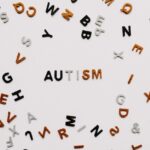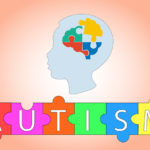Having a loved one who struggles with autism can be difficult. A diagnosis of autism does not supply a solution, because an autism diagnosis exists across a large spectrum.
The large spectrum means autism is different for every individual, from high functioning to non-verbal. Sometimes the condition is also difficult to understand between different genders, as well; each person is impacted differently.
The CDC has identified multiple therapies and programs to support individuals with autism, and also recognizes many additional supportive therapies that may be beneficial.
Educational Programs
This program focuses on the education of your child’s teachers. The education of children with ASD is vitally important: Many individuals on the spectrum have innate, unique, and in some cases genius capabilities with regard to specific subjects and skills.
When teachers have proper resources and programs, they are better able to prepare their classroom to meet the needs of your child. One program that teachers have found useful for serving the needs of children with ASD is Treatment and Education of Autistic and Related Communication-Handicapped Children (TEACCH).
Developmental Therapies
There are a variety of developmental programs, including Speech and Language Therapy, Occupational Therapy, Sensory Integration Therapy, and Physical Therapy. These are typically interconnected and crucial for real-life adaptation and integration into adult behavior that helps some individuals to become more capable of handling the expectations that come with age.
Behavioral Therapy
This therapy is best known as Applied Behavior Analysis, or ABA therapy. It consists of two specific teaching approaches that initially focus on step-by-step instruction in order to help teach the child desired behavior responses; and second, on natural environmental skills to help your child become more adaptable in life. These are known as pivotal skills.
Another component of ABA therapy is the ABCs of behavior. The acronym refers to the Antecedent, or event that would result in a particular behavior; recommends the desired Behavior on the part of the child; which should result in the Consequence of that behavior. ABA therapy also stresses positive reinforcement of desired behaviors.
Social-Relational Therapies and Practices
A common weakness among individuals with ASD is being able to recognize social cues and emotions. The therapies that focus on developing this skill set include floortime, relationship development intervention (RDI), and social stories and skills groups.
Floortime is more of a parental therapy. It encourages parents to allow their child to lead the conversation, or follow the interests of the child, in order to promote communication.
RDI focuses on motivating or increasing an existing interest on the part of the child to help him, her, or them further develop their skills and share them in a more social setting.
Psychological Therapy
This is best known as Cognitive Behavior Therapy. It concentrates on training your child in the best ways to cope with feelings, making the individual cognisant of potential triggers, and training him or her on how best to manage and cope with these triggers or external stimuli.
Supportive
A variety of supportive and supplemental therapies can support your child with ASD. Special diets and supplements might be beneficial for your child.
Since children with ASD are often attached to their routines, they also tend to be particular about their food, which can make it difficult for them to broaden their taste. This can sometimes lead to additional health problems and concerns, especially a balanced regimen of nutrition.
Apart from nutrition, other potentially beneficial therapies include music, equestrian, sensory, chiropractic, and play therapies that can all aid your child in developing a more well-rounded and rich connection and response to the outside world.
Conclusion
For many who have ASD, these therapies will be implemented at differing developmental stages of their life. Where your child happens to fall on the spectrum will help to determine whether any or all of these therapies are needed.
It’s vital to note that many of these treatments can be performed inside the comfort of your home. This is critical for many individuals with ASD, because they thrive on routine and familiar spaces.
A child who has ASD can experience many successes in life. When you couple upbringing and development with the right therapies, you will help to ensure that your youngster can achieve his, her, or their greatest potential.
Related Posts












